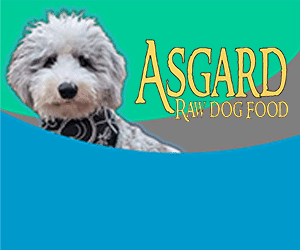The spinal cord is a very important, delicate structure responsible for conveying signals from the brain to the rest of the body (and vice versa). Because of its fragility, it is encased in bones, called vertebrae, to keep it protected. The channel in the vertebrae where the spinal cord lies is called the vertebral canal. Between each vertebra and just below the spinal cord, an intervertebral disc serves as a cushion. The disc allows for mobility and flexibility between the vertebrae during movement. Fig. 1 shows a normal intervertebral disc on MRI imaging, and Fig. 2 is a depiction showing a normal intervertebral disc. Normally, each disc consists of an outer fibrous ring and an inner gelatinous center (a good analogy would be a jelly donut).
As a part of the normal aging process, these discs deteriorate, resulting in so-called intervertebral disc disease (IVDD). Certain breeds (Dachshunds, Beagles, Pekingese, French bulldogs, and other short-legged dogs) are at risk of degeneration earlier than the “normal” aging process, although it is possible to happen in any breed. With intervertebral disc disease, this “doughnut” changes in consistency; the outer fibrous ring becomes weakened and the inner “jelly” center hardens, losing it shock-absorbing properties. The degenerated outer fibrous ring may no longer be able to hold this hard center in place, and movement of the vertebrae on either side may suddenly squeeze the disc out of its normal position (referred to as a herniated disc, ruptured disc, slipped disc, or disc extrusion). The disc material compresses the spinal cord (as there is limited space in the vertebral canal), induces inflammation, and it also can rupture out at considerable force, bruising the spinal cord. Fig. 3 is an MRI image of a ruptured disc in a dog, and Fig. 4 is a illustration showing a ruptured disc.
What are the symptoms of IVDD?
IVDD often occurs between the thoracic (rib cage) and lumbar (lower back) sections of the spine, called the thoracolumbar (TL) region. In this typical region of IVDD injury, the disc problem affects the spinal cord in such a way that the front legs are normal, but the hind legs are affected. Severity of signs depend on the degree of compression and bruising to the spinal cord. There may be back pain, and the dog may show symptoms such as squealing when he/she moves or is picked up. The hind legs may appear weak or unbalanced, walking with a clumsy or “drunk”-looking gait in the hind legs. This is called hind limb ataxia. In more severe cases, the hind legs may be completely paralyzed. There may be loss of bladder control and pain sensation to the hind legs and tail (aka “absent deep pain”).
Other sites of intervertebral disc degeneration in IVDD can include the cervical (neck) spine and the lumbosacral (lower back, closer to the tail) spine. The different locations of injury will result in different problems and symptoms. For example, IVDD in the neck region can result in weakness or paralysis in all four legs, but more commonly an animal exhibits neck pain.
What diagnostic tests are needed?
These symptoms indicate that the dog or cat has a problem affecting the spinal cord but not the exact location or cause of the problem. Disc disease, a tumor of the spine, auto-immune disease, or an infection of the spine may all produce similar symptoms. Tests are needed to determine the exact location and cause of the problem and to decide on the appropriate therapy. X-rays can help to rule out other major problems such as fractures, some bone infections, and some bone tumors. X-rays can also be helpful in choosing the best next test (CT or MRI). Ultimately, either a CT scan or MRI are the best tests to provide insight into the degree of compression and location. A myelogram (injection of dye around the spinal cord) is another option to show a ruptured disc, but does not provide as much information as an MRI or CT scan.
What is the treatment for IVDD?
Some disc ruptures can be treated with medical management if pain is the only sign. Medical management involves strict crate rest and medications to decrease pain and inflammation. The compression of the spinal cord is not relieved with medical management, putting these dogs at greater risk of a repeated bout of disc problems in the future. In many cases, disc disease is a problem requiring surgery to remove the disc material compressing the spinal cord. The surgery used most frequently to remove disc material from around the spine is called a hemilaminectomy. Surgical removal of disc material from the spinal canal is the only treatment that provides rapid and maximal recovery of spinal cord function.
Alternative therapies (acupuncture, laser therapy, chiropractic manipulation, etc) have not been adequately studied in dogs to determine their efficacy.
What is the prognosis?
For animals undergoing a hemilaminectomy (surgery), the speed of recovery and the extent to which normal function of the legs is regained depend on many factors, including the degree of the damage to the spinal cord and the length of time that the spinal cord has been compressed by the disc material. Time may be of the essence, particularly in more severely affected dogs. Animals exhibiting severe neurologic signs (e.g., depressed feeling in their toes), a rapid onset of symptoms (hours), and a long period of time before surgery generally have a prolonged recovery period and may have permanent damage to the spinal cord. An evaluation by a veterinarian as soon as possible (on emergency if necessary) can help to determine prognosis and treatment options.



